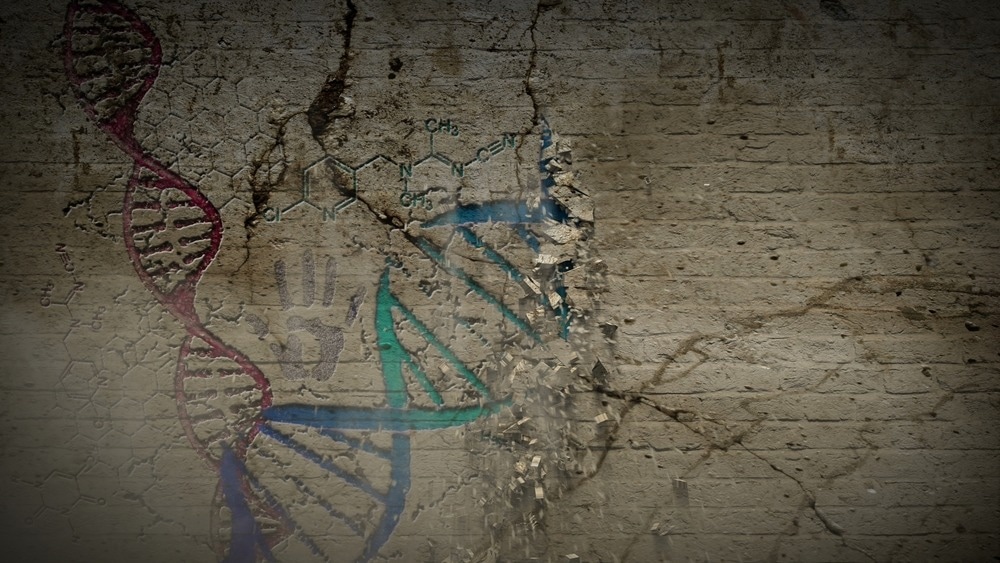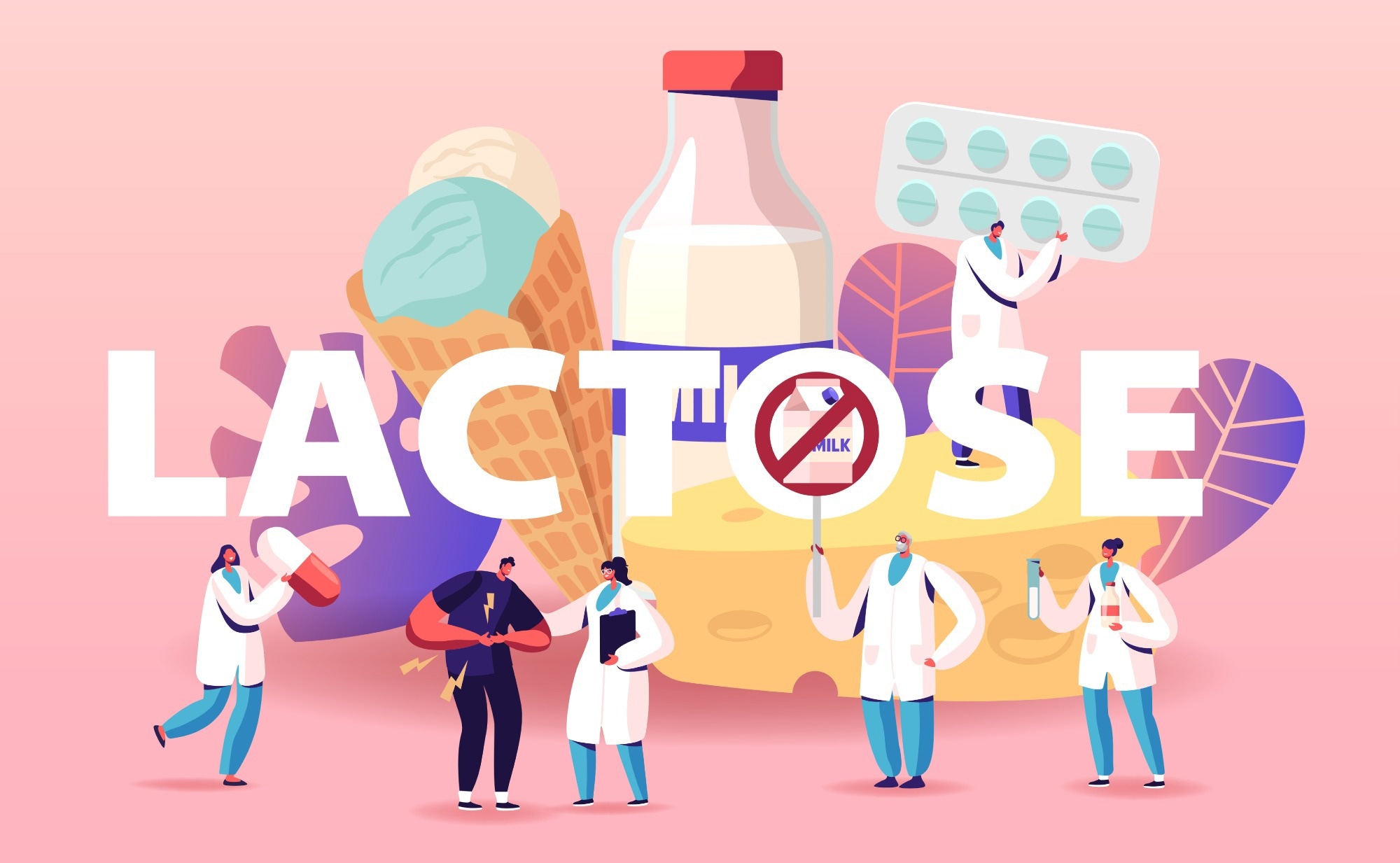 Thought LeadersProfessor Mark ThomasProfessor of Evolutionary GeneticsUniversity College London
Thought LeadersProfessor Mark ThomasProfessor of Evolutionary GeneticsUniversity College LondonIn this interview, we speak to Professor Mark Thomas about his latest research into lactase persistence and how it has evolved over the years.
Please can you introduce yourself and tell us what inspired your latest research?
My name is Mark Thomas, and I am a professor of Evolutionary Genetics at the University College London (UCL). I work on various aspects of human evolution. I use ancient DNA, computer modeling, statistical methods, and archeological data to integrate these different types of data to better understand how we have evolved and adapted to changes in our environment and how we have moved around the world.

Image Credit: SergioSH/Shutterstock.com
How is lactose digested in the body, and how do individuals become lactose intolerant?
There is a sugar in milk called lactose; to digest that sugar, we need an enzyme called lactase in our gut. All babies produce lactase, but in all other mammals studied to date and most humans (and probably in all humans 10,000 years ago), vermox pediatrico dosis the production of the lactase enzyme is either switched off or dropped down to very low levels after the weaning period. That means that all other mammals, most humans, and all humans around 10,000 years ago would not have been able to digest the sugar in milk as adults. This is called lactase persistence or lactase non-persistence.
What has generally been assumed is that if you do not produce the enzyme lactase as an adult, you will be lactose intolerant. That means if you do not produce the enzyme and consume large amounts of milk, you will have symptoms of not being able to digest that milk, such as cramps, diarrhea, and flatulence. This would imply that your body cannot digest the lactose in milk because you do not have the enzyme lactase. Thus, it would instead have to go through your small intestine into the large intestine, where it has a couple of effects.
One effect is that it draws fluid out of the blood and into the colon, making it mushy and causing diarrhea. The second effect is that it gets fermented by bacteria, and they produce a whole range of fatty acids and gases, especially hydrogen. Hence, you get lots of flatulence.
For years, it has been widely assumed that lactose tolerance emerged so humans could consume more dairy products. Why is this, and how is your new research challenging this theory?
The general idea was that milk specifically evolved to be nutritious. It has an amazing combination of nutrients, the best quality protein, a fantastic set of fats and fat-soluble vitamins, and huge amounts of calcium. It has a decent amount of vitamin D and other things we generally lack. It is a kind of superfood. Thus, one of the ideas for why it was such a significant advantage to digest the sugar in milk – lactose – is that it is generally nutritious and good for human health.
Another idea is that people in Northern Europe do not get much vitamin D for much of the year due to the amount of sunlight that the skin sees. One of the main reasons you need vitamin D is that it helps you absorb calcium, and milk has loads of calcium in it. That might have been important in Northern Europe but not so important in Africa, southern Europe, or Southern Asia, where there is plenty of sunlight. Another reason is that milk is a relatively good source of uncontaminated fluid.
All these ideas hypothesize that the more milk you drink, the stronger the natural selection will be. But we are not finding that. We are finding that nothing about the milk people drink makes any difference to natural selection.
My colleague in Bristol, George Davey Smith, one of the main authors of this study, dug into the UK Biobank and looked at people who were genetically lactose persistent and genetically non-lactose persistent. He could not see any difference in their milk-drinking behavior or their health indicators. This is quite puzzling because it appears that if you are not producing lactose, it does not mean that you necessarily have bad symptoms of lactose intolerance.

Image Credit: ivector/Shutterstock.com
In your latest research, you investigated the evolution of lactase persistence. Can you describe how you carried out your latest study?
We have observed the genetic causes of lactase persistence as they have evolved in different parts of the world. Only about a third of adults worldwide are lactase persistent, but they are distributed in groups worldwide. Looking at the genetics and the genetic changes through time, we can show that this trait, lactase persistence, was under huge, positive natural selection. It gave our ancestors a huge survival advantage.
Over the last 10,000 years, lactase persistence as a genetic trait has evolved multiple times in different parts of the world. Lactase persistence means that people carry on producing this enzyme throughout their adult life. The key thing about this study is that we can determine whether somebody is lactase persistent or not by looking at their DNA.
Our collaborators built up a huge database of about 5000 measurements of whether the fat in pottery was milk or from different points in time and places across Europe over the last 10,000 years. They could build up an incredibly detailed map of the change in milk use over time in different places.
My team conducted statistical or computer modeling using databases. With this data, it was essential to determine if we can see changing frequencies of lactase persistence through time and if the change in patterns of milk use explains the jumps in the frequency of lactase persistence – i.e., is it able to explain the natural selection on lactase persistence more accurately than just assuming lactase persistence was evolving everywhere at a constant rate through time.
What did you discover about lactase persistence?
To our surprise, analyzing the change in milk use over time did not help explain the evolution of lactase persistence any better than assuming it was selected constantly at the same rate throughout time. This is both puzzling and consistent with George's finding that being lactase persistent or not does not seem to make a difference to people's health.
George published the idea that when people are exposed to large amounts of pathogens, diarrheal disease can go from an inconvenient to a fatal condition. I published a related idea where I suggested that in times of famines in the past, people would shift over to dairy foods and start consuming only unfermented milk, which is high in lactose and gives them diarrhea. Now we have two new ideas: more exposure to pathogens drives natural selection on lactase persistence, and famine exposure drives natural selection on lactase persistence.
In archeological data, we found proxies for pathogen and famine exposure. For famines, we used radiocarbon dates and how many famines there were to estimate the growth or decline of populations. We also looked at the spatial distribution of those radiocarbon dates. When people were squeezed into urban settlements and lived close together, they were more likely to be exposed to pathogens. We took that data and created mathematical representations of how much pathogen and famine exposure there was. Proxies for famines and pathogens seem to explain the evolution of lactase persistence better than milk use or constant natural selection.
Your latest research relied on the use of ancient DNA, something we are seeing more of within scientific research. How have advancements within the genetics space allowed scientists to further their understanding of various topics, including lactase persistence?
DNA sequencing technologies have improved hugely. That increase in technology has lent itself beautifully to ancient DNA studies. Those methods for reading DNA are very well suited to reading many short fragments of DNA, and ancient DNA is essentially just many short fragments of DNA.
DNA does break down over time but lasts for quite a long time. We can get DNA out of old bones going back thousands of years. What that means is we can look for changes in the frequency of genetic variants. If a genetic variant jumps around in frequency and increases slowly over time, that could be due to chance. If a genetic variant goes from low to high frequency very quickly, that requires an extra push, and that push is generally natural selection.
We now have this amazing method for looking at natural selection in action, where we can measure it and tell which parts of our genome, which genes, have been under the strongest natural selection over time with ancient DNA. We can watch evolution in action. Lactase persistence is the strongest signature for a single gene trait, but we can look at others.
Many genetic variants seem to have changed rather rapidly through time, many of them being associated with diet or infectious disease resistance. These approaches are valuable when understanding future disease vulnerabilities shaped by how we have evolved in our evolutionary past.

Image Credit: Sohel Parvez Haque/Shutterstock.com
For your latest research, you collaborated with the University of Bristol as well as collaborators from over 20 countries. How important was collaboration to your research?
Our research would not have been possible without collaboration. We have three major pillars of our study. First, Richard and Mélanie's work on change in milk use through time using really advanced archeological chemistry requires levels of expertise beyond my capabilities and some pretty fancy and expensive machines. Second is the kind of work George did in Bristol; looking at the UK Biobank was really important for pointing out an unanswered question. Thirdly, our team also played a major role: looking at ancient DNA and developing statistical and computer modeling approaches. The results of this study would not have been the same without all three institutions being involved.
What are the next steps for you and your research?
We will keep following the lactose persistence and lactose intolerance route. We have enough data to do these tests in Europe, but it is quite clear that strong natural selection has also been occurring in Southern Asia, the Middle East, and especially in many African populations. It would be fantastic to look at this question in African populations when we have both the milk use data and the ancient DNA data.
If natural selection on lactose persistence is a result of famine and pathogen exposure, that unites the regions because, in the past, there was no reason to think that people were more or less exposed to famines or pathogens in Europe, Africa, the Middle East, or Southern Asia. It would be great to test the new model that our data seems to support for its evolution and how well that would work in Africa, the Middle East, and Southern Asia.
Now we have this methodology to better understand what drives natural selection, we can start to better understand what is pushing that natural selection, and we can test different hypotheses of what is driving natural selection using these new statistical methods. I would want to do that on a whole range of other genetic variants under natural selection and test what is driving them as well.
About Professor Mark Thomas
Mark Thomas is Professor of Evolutionary Genetics at University College London and works mainly on biological and cultural aspects of human evolution. He uses computer simulation and statistical modelling to make inferences from genetic data – including ancient DNA – and archaeological information, on processes such as past migrations and dispersals, natural selection – particularly in response to changes in diet and infectious disease loads – and how demography shapes cultural evolution.
Posted in: Thought Leaders | Medical Science News | Healthcare News
Tags: Bacteria, Blood, Calcium, Diarrhea, Diet, DNA, DNA Sequencing, Enzyme, Evolution, Fatty Acids, Flatulence, Frequency, Gene, Genes, Genetic, Genetics, Genome, Lactose Intolerance, Large Intestine, Nutrients, Pathogen, Protein, Research, Skin, Small Intestine, Technology, UK Biobank, Vitamin D, Vitamins
.png)
Written by
Emily Henderson
During her time at AZoNetwork, Emily has interviewed over 300 leading experts in all areas of science and healthcare including the World Health Organization and the United Nations. She loves being at the forefront of exciting new research and sharing science stories with thought leaders all over the world.
Source: Read Full Article
